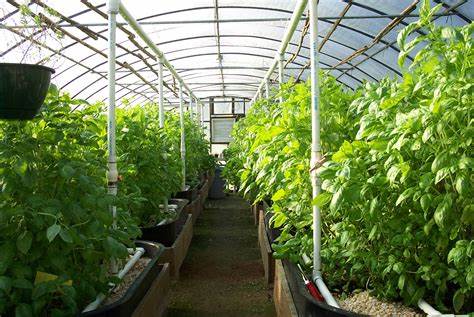In constructing homes for plants that cost more than homes for people,
在建造比人们居住的房子更昂贵的植物家园时,
the Erskines joined the swelling ranks of wealthy individuals willing to spend hundreds of thousands of dollars—occasionally millions on private green houses.
厄斯金一家加入了越来越多的富人行列,他们愿意斥资数十万美元,有时甚至数百万美元建造私人温室。
In the Erskines’ case the impetus was charitable.
对于厄斯金家的情况而言,做慈善是其推动力。
For others, it’s often in pursuit of a luxury the Cambo estate has enjoyed for centuries: fresh produce year-round.
对于其他人来说,往往是为了追求坎博庄园数百年来一直享有的一种不同寻常的乐趣:全年拥有新鲜的农产品。
The trend toward home grown food, produced in expensive personal greenhouses, “has always been there, but it’s increasing,”
总部位于多伦多的温室工程咨询公司创始人亚历克斯·特克维奇表示,
says Alex Turkewitsch, founder of the Toronto-based consultant Greenhouse Engineering.
用昂贵的私人温室自己种植食品的趋势“一直都存在,不过这种势头正在增长”。
“Each of the last three years, we’ve had 50% growth year over year,” says Neal Bobrick, chief operating officer of Hartley Botanic,
“在过去的三年中,我们每年的增长率都是50%,”哈特莱植物公司的首席运营官尼尔·鲍勃理克说道。
whose “Victorian” green houses start at $25,000 and whose “modern horticulture” start at about $60,000.
该公司建造的“维多利亚式”温室起价为2.5万美元,“现代型园林”起价约为6万美元。

“The whole farm-to-table concept has been a driver of our additional business.”
“从农场到餐桌的整个理念一直是我们开展附加业务的驱动力。”
John Lawson, a sales director at Alitex, says 10 years ago his Hampshire-base company would construct about 15 greenhouses a year that cost more than $250,000.
Alitex公司的销售总监约翰劳森表示,10年前,总部位于汉普郡的公司每年会建造15座温室,耗资超过25万美元。
Now they build close to 50. “People are getting more sensitive,” he says.
现在他们建造了将近50座。“人们变得越来越敏感,”他说。
“They don’t want mass-produced stuff that’s been shipped around the world.
“他们不想要那种被运到世界各地大量生产的东西,
They want home grown, solid stuff. And at the top end of the market, they can afford to have it.”
而是想要自己种植的物品。而且在高端市场,他们也负担得起。”
People have wintered plants for thousands of years, most notably in orangeries such as the ones at the palaces of Versailles outside Paris and Schönbrunn in Vienna,
人们在帮助植物越冬方面已有数千年的历史,尤其是在柑橘暖房里,比如建造在巴黎郊外的凡尔赛宫和维也纳的美泉宫的暖房。
where delicate plants would be brought into large, windowed halls to keep them from dying during a frost.
人们会把精致的植物放进有窗户的大厅中,以防它们在霜冻中死去。
These structures, many of which are still around, were principally intended for nurturing exotic plants that would never have survived otherwise.
许多这样的建筑物仍然存在,主要是为了培育原本无法生存的外来植物。












